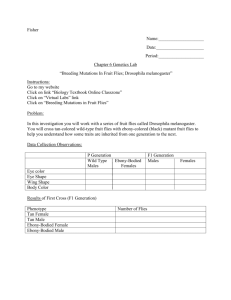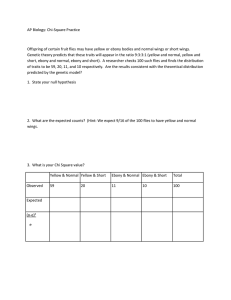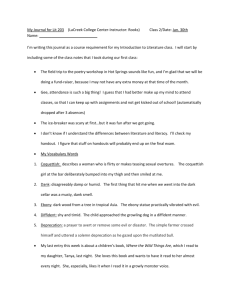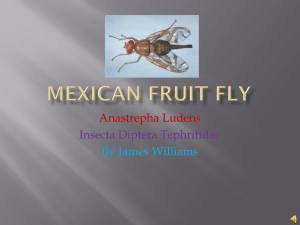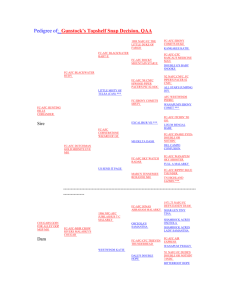Fruit Fly Genetics Virtual Lab - Mercer Island School District
advertisement
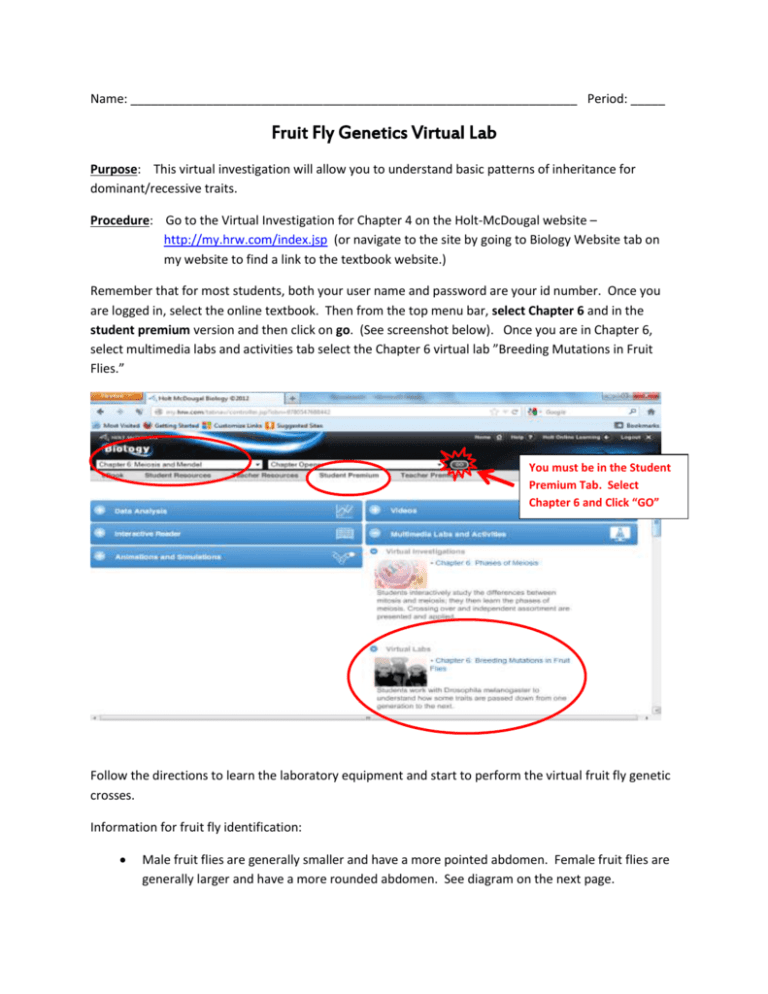
Name: _________________________________________________________________ Period: _____ Fruit Fly Genetics Virtual Lab Purpose: This virtual investigation will allow you to understand basic patterns of inheritance for dominant/recessive traits. Procedure: Go to the Virtual Investigation for Chapter 4 on the Holt-McDougal website – http://my.hrw.com/index.jsp (or navigate to the site by going to Biology Website tab on my website to find a link to the textbook website.) Remember that for most students, both your user name and password are your id number. Once you are logged in, select the online textbook. Then from the top menu bar, select Chapter 6 and in the student premium version and then click on go. (See screenshot below). Once you are in Chapter 6, select multimedia labs and activities tab select the Chapter 6 virtual lab ”Breeding Mutations in Fruit Flies.” You must be in the Student Premium Tab. Select Chapter 6 and Click “GO” Follow the directions to learn the laboratory equipment and start to perform the virtual fruit fly genetic crosses. Information for fruit fly identification: Male fruit flies are generally smaller and have a more pointed abdomen. Female fruit flies are generally larger and have a more rounded abdomen. See diagram on the next page. Male Female The trait that will be studied in this activity is body color. Compare the body color of the upper body segment (tan vs. ebony/black). Analysis Questions: 1. What are the phenotypes for body color of the parental generation? 2. What are the results for the F1 generation? Phenotype Tan Males Tan Females Ebony Males Ebony Females 3. Number What are the results for the F2 generation? Phenotype Tan Males Tan Females Ebony Males Ebony Females Number Give the approximate ratio of tan to ebony fruit flies in the F2 generation. 4. Infer if the allele for ebony body color is dominant or recessive. Explain your answer. 5. The parental generation was true-breeding. What was the genotype of the parental male? _______ What was the genotype of the parental female? _______ 6. Construct a Punnett square to show the original cross for the parental generation. Relate this Punnett Square to the results for the F1 generation. 7. Construct a Punnett square to show the cross for the F1 generation. Relate this Punnett Square to the results for the F2 generation.
